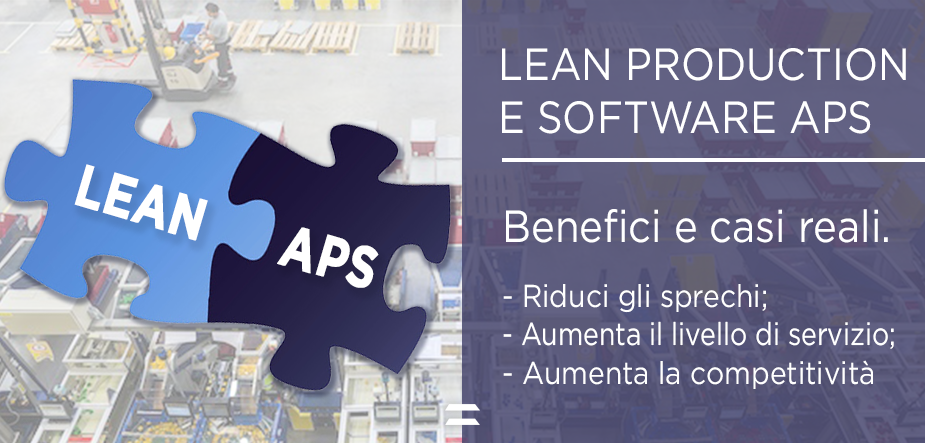Increasing business results by reducing inefficiencies, in a context that requires increasing the product portfolio and a supply chain as fast as possible, can be a really difficult challenge for many companies. Fortunately, business managers today have several tools to choose from to increase the performance of their productions. Lean Manufacturing is a philosophy that aims to minimize waste to the point of eliminating it. Advanced Planning & Scheduling systems (APS) are the most advanced software to support decision-making. Together they create the maximum benefit to companies by allowing them to bring the lean philosophy even to companies that produce on order.
Is it possible to use APS software in a lean production?
Numerous manufacturing companies produce every day using lean production techniques, including Just In Time production, and still others use APS software for production planning and scheduling. When companies using APS software consider adopting lean production methods to increase efficiency, or when lean companies consider improving planning accuracy, the question arises: How do advanced scheduling and planning (APS) systems improve lean performance?
Why implement an APS in a lean production?
First of all, using APS systems to support lean techniques is an effective way to structure and integrate them, reducing the chances that these techniques will fall into disuse over time.
In addition to this, implementing an APS is a choice that allows even the leanest productions to increase competitiveness. In fact, these too need visibility into planning and scheduling to achieve the best results. Past experiences show how companies have oversimplified lean techniques, thus losing the benefits that technology can bring to support and integrate the lean philosophy itself. On the contrary, the companies that have performed best in terms of lean production are those that, alongside lean production techniques, have implemented production planning systems. The consequence has generally been a considerably higher return thanks to an increase in supply chain visibility and acquired decision-making capacity.
Using an APS system allows a company to identify in detail the bottlenecks present in production, whether it is due to machinery, personnel, tools or other. In addition to allowing you to see what resources would be needed to translate a plan into reality, an APS also allows you to analyze the impacts at finite capacity and see performance indicators.
APS and lean together, does it work?
Yes, often these techniques are used simultaneously by companies to achieve common goals such as reducing inventories and lead times or increasing the use of resources.
Although these are two very distinct things, in fact, both refer to manufacturing companies; in addition to this, both the software for advanced planning and scheduling, and the lean production philosophy aim to identify and eliminate waste and increase operating results.
The APS system can help increase the agility and dynamism of Kanban. In fact, the production planning solution allows the planner to see inventory levels, backlogs, batch parameters, cycle times, set-up times and other relevant information to calculate the Kanban in an optimal and dynamic way, in line with changes in demand and production.
An APS software is then able to calculate at finite capacity, that is, to consider different limits and operational constraints, in order to calculate plans in a very realistic way.
Real cases of use of APS in support of Lean
The real cases of use of both solutions are multiple and with excellent results:
- Pietro Fiorentini: considered for years the Toyota of Italy for having been the pioneer of this philosophy in Italy, he has been using the APS CyberPlan since 1994. In this way, it has reduced lead times by 75%, increased the level of service and balanced warehouses. READ THE CASE STUDY >
- Modulblok: Manufacturer of automated warehouses has joined the APS CyberPlan since 2008 to support its own production on order. In a few months it reached and maintained a service level of 98%, reducing lead times by 60% and halving the cost of planning. READ THE CASE STUDY >
